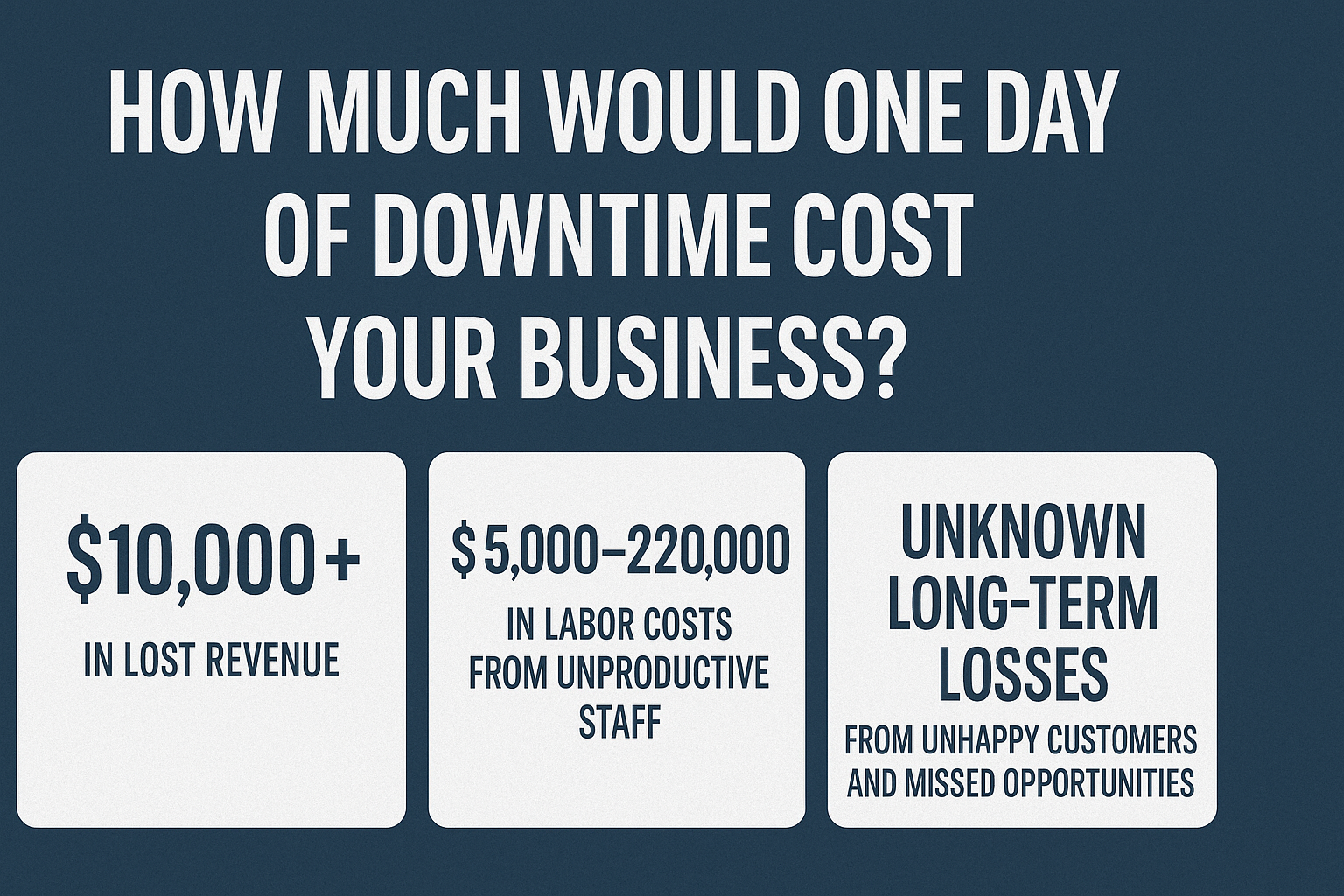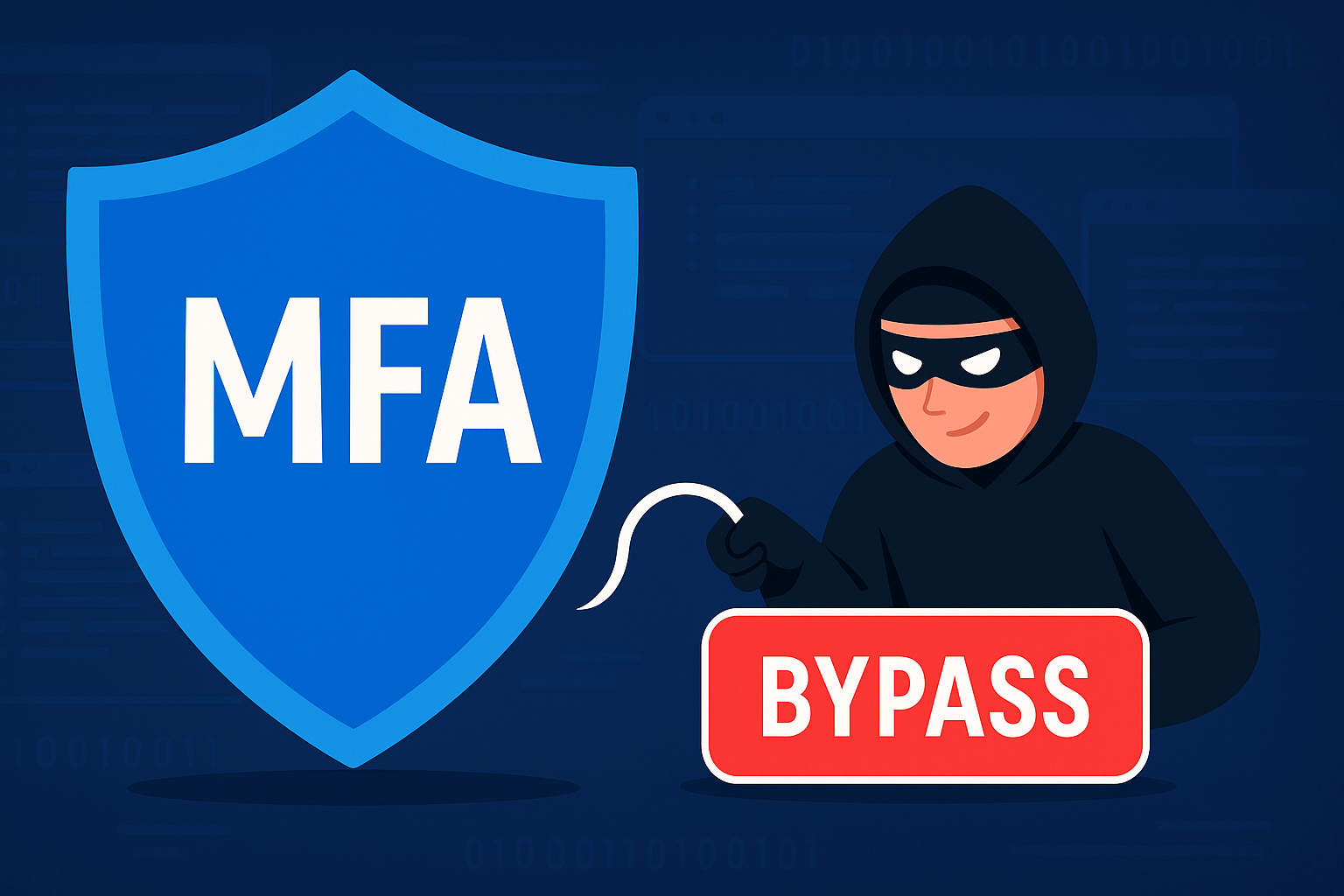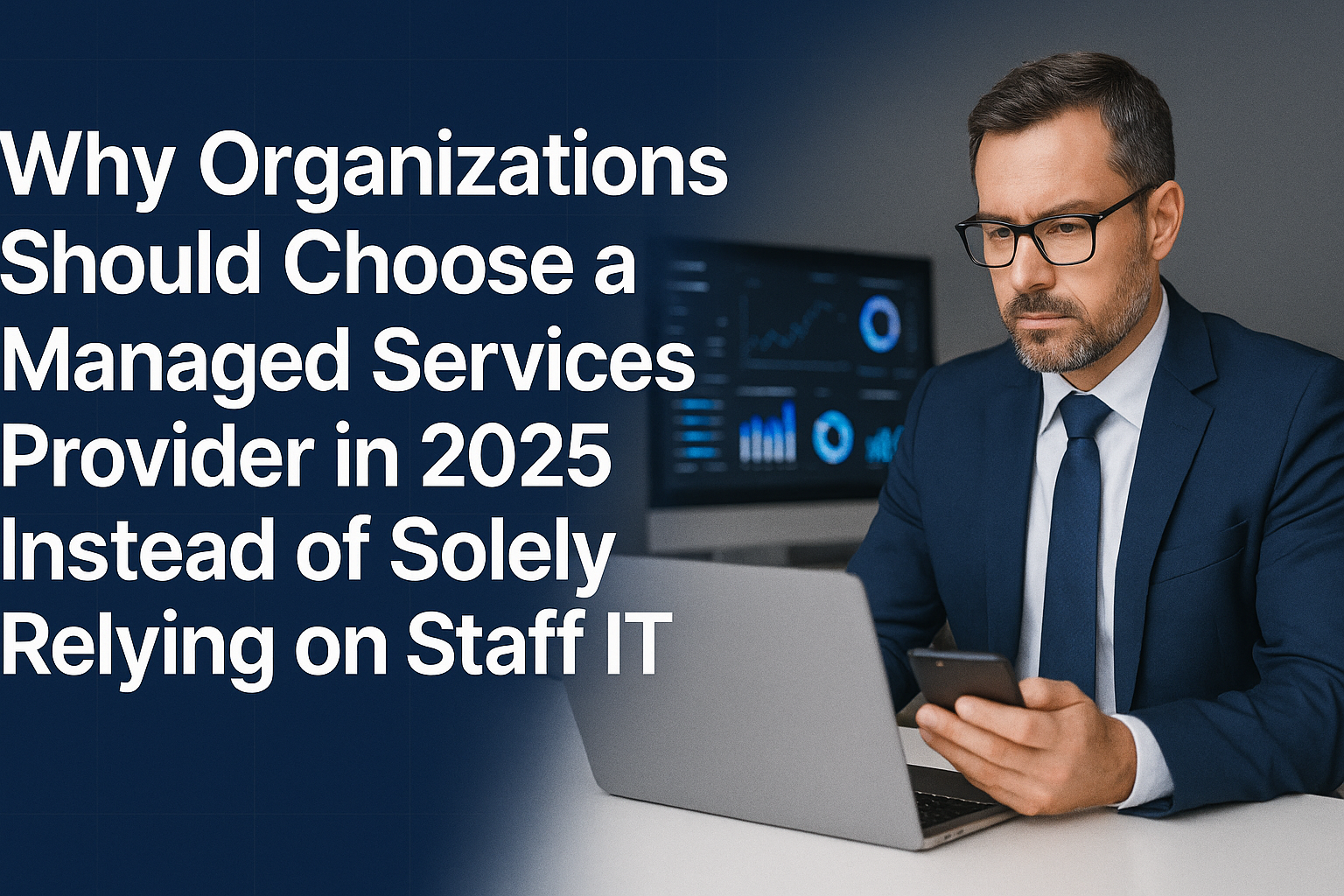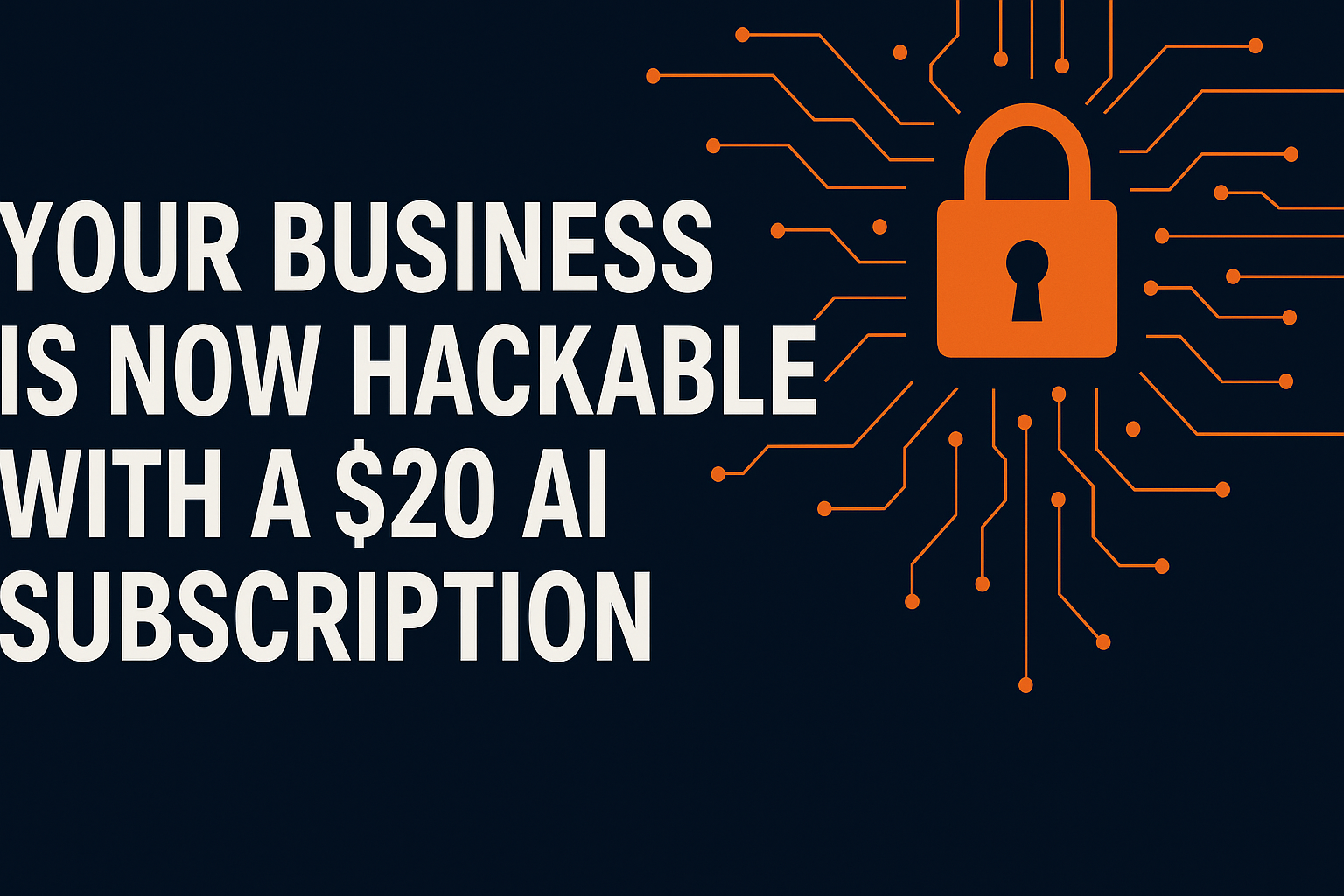Secure Your Most Valuable Asset.
Your Business.

By b328cabadd620e9eeb96502345549129_cc_2214
•
November 4, 2025
Let’s start with the obvious: if your Microsoft 365 account gets breached, it’s not “just” an email problem. It’s a full-blown business crisis. Microsoft 365 isn’t just where your inbox lives. It’s where your files, contacts, calendars, and even internal communications reside. It’s the digital heartbeat of your business, and when it’s compromised, attackers gain the master key to your kingdom. Here’s what happens next: 1. The attacker impersonates you. The moment your credentials or session token are stolen, the attacker can log in as you, sending invoices, asking employees to wire money, or requesting sensitive data. Because it’s coming from your real account, it’s incredibly convincing. 2. They pivot deeper into your organization. Most modern attacks don’t stop at email. Once inside, hackers search for shared files, OneDrive content, and Teams messages that contain passwords, vendor info, financial data, etc. Then, they expand their reach, often gaining access to other users’ accounts or systems. 3. Your reputation takes a hit. Imagine your clients getting phishing emails from “you.” Even if you contain the breach, the damage to trust can linger. Many businesses find it harder to recover reputationally than financially. 4. They may plant persistence. Attackers don’t always vanish after the first breach. They create hidden forwarding rules, drop malicious OAuth apps, or steal refresh tokens to maintain access, even after you reset your password. 5. Compliance and liability come knocking. If your company handles regulated data (like financial or health information), a breach can trigger mandatory reporting, investigations, and hefty fines. Even small businesses aren’t exempt. The Harsh Truth: If you think Microsoft 365 security “comes built-in,” think again. Out of the box, it’s like buying a house with locks, then leaving all the doors open. True protection means layering: ✅ Advanced email security and encryption ✅ Multi-factor authentication (and yes, it’s still essential) ✅ SOC monitoring to catch intrusions in real time ✅ Security awareness training for your team ✅ Regular penetration testing and vulnerability assessments If your Microsoft 365 gets breached, it’s not the end of the world, if you act fast and have the right team behind you. At ABT Solutions, we specialize in protecting businesses from these exact threats. We secure your Microsoft 365 environment, monitor for intrusions, and help you stay ahead of attackers before they strike. Don’t wait for the wake-up call. Your Microsoft 365 is the front door to your business. Let’s make sure it’s locked, alarmed, and watched 24/7.

By b328cabadd620e9eeb96502345549129_cc_2214
•
October 22, 2025
Let’s play a quick game of math, don’t worry, it’s the kind that makes your stomach drop, not your calculator smoke. Imagine you wake up tomorrow and your business is dead in the water. No email. No phones. No file access. No customer orders. No billing. No nothing. How much would that one day of downtime cost you? If you’re like most businesses, the answer is shocking. Between lost productivity, halted sales, recovery efforts, and the blow to your reputation, downtime can easily rack up thousands, or even tens of thousands, of dollars per day. According to industry studies, the average cost of IT downtime is between $5,600 and $9,000 per minute . Now, you might not be a Fortune 500 company, but even a small business losing access to systems for a single day could easily see: $10,000+ in lost revenue $5,000–$20,000 in labor costs from unproductive staff Unknown long-term losses from unhappy customers and missed opportunities And that’s before you even add the cost of recovering your systems, restoring backups, or paying the ransom if a cyberattack was involved. Here’s the harsh truth: Downtime doesn’t just cost money, it kills trust. Your clients expect you to be reliable. If they can’t reach you, they’ll find someone they can. At ABT Solutions, we help businesses eliminate that risk. From proactive monitoring and patch management to data backup and disaster recovery, our goal is simple: keep you up, running, and protected. Because prevention isn’t expensive, downtime is . If you don’t know how long your business could survive without access to your systems, it’s time for a conversation. We’ll help you find out before a hacker does.

By b328cabadd620e9eeb96502345549129_cc_2214
•
October 8, 2025
For years, businesses have relied on VPNs (Virtual Private Networks) as the “secure” way to connect remote workers to company systems. But the truth is, VPNs, especially SSL VPNs, have become one of the biggest security liabilities in today’s threat landscape. Hackers aren’t breaking into businesses by guessing passwords anymore. They’re going straight after the tools you use to connect: VPNs and firewalls. The Problem with VPNs VPNs were designed to create a tunnel between a remote user and your company network. Once that tunnel is open, the user (or attacker) has broad access inside your network. It’s like giving someone the keys to the entire building when all they needed was access to one office. When attackers compromise a VPN, they don’t just get a foot in the door, they’re sitting in your lobby with access to everything. SSL VPNs and SonicWall Vulnerabilities In the past few years, we’ve seen a flood of zero-day vulnerabilities targeting SSL VPNs and firewalls. One of the most high-profile examples is the SonicWall SSL VPN vulnerability, which allowed attackers to bypass authentication and gain access directly into company networks. They didn't even need a password! That wasn’t a one-off event. Almost every firewall vendor, Fortinet, Cisco, Palo Alto, SonicWall, and others, has dealt with critical VPN-related zero-days. Cybercriminals actively scan the internet for exposed VPN portals, waiting to pounce on organizations that haven’t patched within hours of a new exploit being discovered. Why This Puts Your Business at Risk Single Point of Entry: VPNs often provide attackers with wide-open access once compromised. Zero-Day Exploits: Hackers don’t wait, many breaches happen before patches are even available. Credential Theft: If an employee’s VPN password is stolen, attackers bypass your defenses. Compliance Risks: Breaches through VPNs can expose sensitive data, leading to fines and legal issues. The Better Approach: Zero Trust Remote Access Instead of relying on VPNs, modern businesses are adopting Zero Trust solutions that limit access to only what a user needs, when they need it. This ensures that even if an account is compromised, attackers don’t get the keys to your entire network. What You Should Do Next If your business is still using SSL VPNs or traditional VPNs, you’re already at risk. Hackers are actively targeting these systems, and history has proven that more vulnerabilities will continue to surface. It’s time to move away from outdated VPN technology and adopt modern security practices that keep your business safe. At ABT Solutions, we help businesses just like yours secure their remote workforce with Zero Trust access, advanced firewall management, and 24/7 monitoring, so you don’t have to worry about whether your VPN is the next door hackers walk through. 👉 Contact us today before the next firewall zero-day becomes tomorrow’s breach.

By b328cabadd620e9eeb96502345549129_cc_2214
•
September 24, 2025
We always recommend multi-factor authentication (MFA). It’s an important layer of protection. But here’s the truth: MFA alone is no longer enough. Attackers are getting smarter and sneakier. One of the fastest growing threats right now is the Adversary-in-the-Middle (AiTM) attack, and it’s especially targeting Microsoft 365. These attacks bypass MFA. They don’t drop malware. Instead, they use legitimate tools and stolen session tokens to “live off the land.” That means they can look just like normal users inside your environment, making them extremely hard to detect. Real-World Example: A Small Plumbing Company Nearly Shut Down A friend of mine owns an MSP, and just recently he got a call from a plumbing company with 10 employees. They were in a panic because they couldn’t send emails, everything just sat in the sent folder. After investigating, my friend found that one of their staff had clicked on what looked like a DocuSign email. No password was entered. No credentials were typed in. Yet attackers still managed to slip inside their Microsoft 365 environment. Once in, the attackers configured a separate domain and started sending malicious emails on behalf of the company. Operations came to a grinding halt. Within an hour, my friend’s team had: Removed the attackers from the environment Rolled out their security monitoring software Reset all passwords and MFA with stronger rules Started the staff on their first cybersecurity training session Here’s the kicker: this plumbing company had no cybersecurity in place before this incident. Now, they’ve got the protections, training, and monitoring needed to prevent this from ever happening again. You Can’t Do This Alone The bad guys are no longer just brute-forcing passwords or sending obvious spam. They’re using advanced, stealthy methods that go around your defenses instead of through them. MFA is a must, but it’s not enough on its own. You need a cybersecurity partner to continuously monitor, detect, and respond to these evolving threats. The cost of doing nothing is a business that can grind to a halt in minutes. The cost of being protected? For small businesses, it can sometimes be less than what you’re already paying for phone or internet service. If you’re not sure where your business stands, let’s talk. Don’t wait until you’re the next victim of an AiTM attack.

By b328cabadd620e9eeb96502345549129_cc_2214
•
September 2, 2025
Every organization in 2025 faces the same challenge: doing more with less. Budgets are tight, cyber threats are escalating, and customers, members, and employees all expect fast, reliable services. Many organizations still rely on a single in-house IT employee, or a small IT staff, to handle everything from resetting passwords to defending against ransomware. The reality is, that model simply isn’t enough anymore. Here’s why organizations should look to a Managed Services Provider (MSP) in 2025 instead of relying solely on staff IT: 1. Cybersecurity Has Become Too Complex Cyberattacks against organizations of all sizes are on the rise. Hackers no longer just target large corporations, they increasingly go after small and mid-sized businesses, nonprofits, schools, and professional practices because defenses are often weaker. A single IT staffer cannot monitor systems around the clock, implement enterprise-grade protections, or keep up with evolving threats. An MSP brings an entire team equipped with Security Operations Center (SOC) monitoring, endpoint detection, intrusion prevention, and advanced security tools. These are resources most organizations could never afford on their own, nor would they know how to assemble into a security stack strong enough to defend against modern threat actors. 2. 24/7 Support and Monitoring A staff IT person clocks out at 5 PM. Hackers don’t. MSPs provide round-the-clock monitoring and response. That means ransomware attacks at midnight get caught early, servers that crash over the weekend get worked on before monday, and your operations don’t suffer long outages that damage your reputation. 3. Scalable Expertise IT staff often wear too many hats: networking, cybersecurity, backups, compliance, user support, and more. No one person can be an expert in all areas. With an MSP, organizations gain access to a team of specialists in different areas of technology. That expertise scales as you grow, without the cost of recruiting, training, and retaining multiple full-time employees. 4. Budget Predictability Budgets are often set years in advance. Unexpected IT costs, like replacing servers after a failure or paying for emergency breach recovery, can wreck financial stability. MSPs provide predictable, fixed monthly pricing that covers proactive maintenance, monitoring, and support. This helps organizations plan more effectively while avoiding expensive surprises. 5. Compliance and Data Protection Organizations of all kinds handle sensitive data: financial records, health information, member databases, or intellectual property. Regulations around data handling and privacy are becoming stricter every year. An MSP ensures that data is encrypted, backups are tested, and compliance requirements are met, protecting both your organization and the people who trust you. 6. Focus on Your Mission When IT issues consume staff attention, leaders and employees can’t focus on what matters most: serving customers, members, or the community. By outsourcing IT management to a trusted MSP, organizations free up time and resources to grow, innovate, and serve more effectively. 7. Future-Proofing Technology Technology is advancing quickly: cloud solutions, AI-driven services, remote collaboration, and industry-specific applications are becoming essential. An MSP helps organizations adopt new technologies smoothly and securely, ensuring they don’t fall behind while competitors modernize. Who Needs an MSP? The truth is, every type of organization is a target for cyberattacks and can benefit from professional IT management. Whether you are in: Municipalities and Local Government Financial Services (banks, credit unions, investment advisors, insurance firms) Healthcare and Medical Practices Education (K-12 schools, colleges, training centers) Nonprofits and Community Organizations Manufacturing and Industrial Companies Professional Services (law firms, accounting, CPA, engineering, etc.) …a Managed Services Provider can deliver the protection, reliability, and expertise you need. Final Thought IT is no longer just about fixing computers. It’s about defending against cyberattacks, keeping essential services running 24/7, and planning for the future of digital operations. In 2025, a single staff IT person simply cannot carry that responsibility alone. By partnering with a Managed Services Provider, your organization gains the expertise, protection, and scalability it needs to safeguard data, maintain uptime, and grow with confidence, without blowing the budget.

By b328cabadd620e9eeb96502345549129_cc_2214
•
August 29, 2025
Anthropic’s latest threat report confirmed what cybersecurity professionals have feared: the barrier to launching ransomware attacks has collapsed. Who is Anthropic and why should we believe them? Anthropic is one of the world’s leading AI companies, founded by former OpenAI researchers and backed by Amazon and Google. Their AI, Claude, is a direct competitor to ChatGPT. When Anthropic issues a threat report, it’s not hype, it’s insider intelligence from a company building the very technology now being weaponized. In one documented case, a single individual with no coding skills used Claude Pro to: Research and select targets Develop custom malware Automate extortion campaigns The attacker successfully executed 17 ransomware incidents , demanding ransoms between $75,000 and $500,000 . Why This Matters Until now, ransomware required specialized technical knowledge, underground criminal networks, and months of preparation. That barrier to entry is GONE . Today, all it takes is an AI subscription and basic English skills . Artificial intelligence has compressed the learning curve from years to weeks. That means: Attacks will multiply — What one unskilled attacker pulled off, thousands more can replicate. Small businesses are in the crosshairs — Automation makes “smaller targets” profitable at scale. Cyber insurance costs will spike — Actuarial models are based on yesterday’s risks, not today’s reality. The Dangerous Window We’re In The defense industry will adapt, but there’s always a lag between new attack methods and effective countermeasures. Right now, we’re in that gap. This is the most dangerous time for unprepared organizations. What Businesses Should Do Immediately If you’ve been putting off security upgrades, the clock just ran out. Here are urgent steps every organization should take: Audit your current security posture — Identify vulnerabilities before attackers do. Upgrade your incident response plan — Assume a breach is possible and plan accordingly. Harden email and endpoint security — Most ransomware campaigns begin with phishing or weak endpoint protection. Invest in employee training — Humans remain the easiest entry point for attackers. Review your cyber insurance coverage — Premiums and exclusions are about to shift dramatically. The Bottom Line Cybersecurity risk has changed permanently. If one person with no technical background can launch automated ransomware campaigns, the floodgates are open. Doing nothing is no longer an option. The question isn’t if attackers will find your business, it’s whether you’ll be ready when they do.
LINKS
STAY INFORMED ABOUT EMERGING THREATS!
Contact Us
Awesome! You will be added to our Threat Intelligence Email Alerts.
Oops, there was an error. Please try again later.
© 2025
All Rights Reserved | ABT Solutions, LLC
